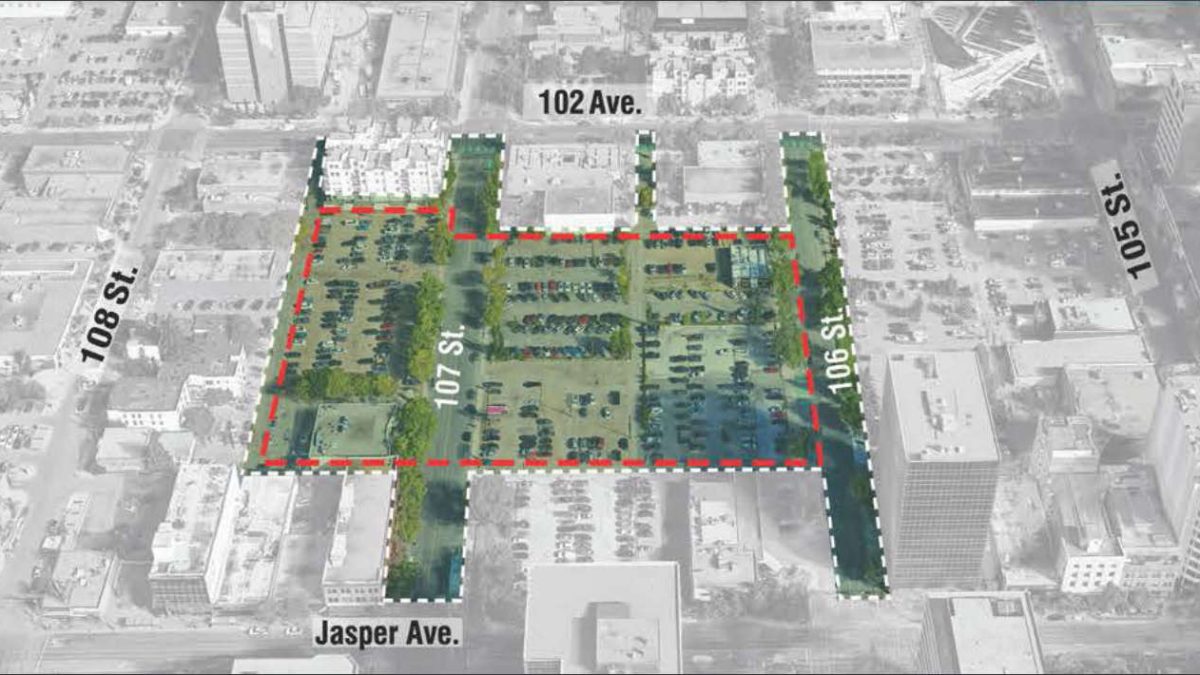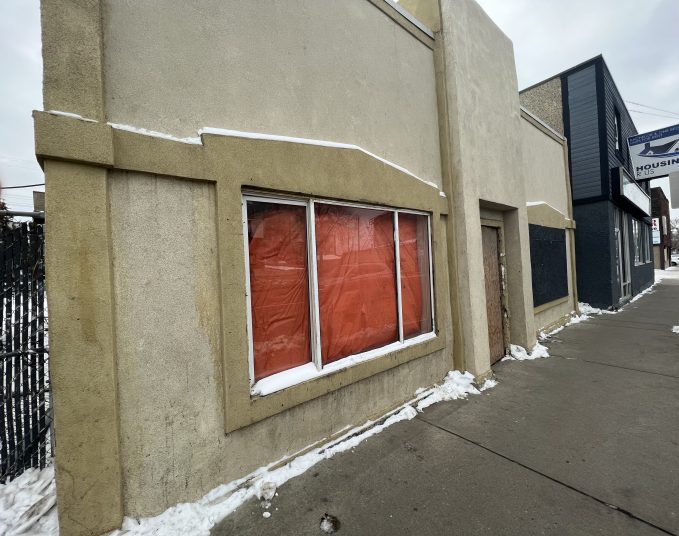Josh Thompson moved to downtown Edmonton from the suburbs and expected more suburban friends his age would follow. It never happened.
Thompson is 26 and grew up in Terwillegar and Windermere in the city’s southwest. He moved downtown when he was 21, while completing his university degree. There, he says, neighbourhoods like Oliver and Downtown – which he’d previously written off as run down – revealed themselves to be full of character. Rather than the edge-of-city suburban streets of his youth, which all looked identical, he says he finally felt Edmonton had an identity.
Five years ago, one might have expected Thompson’s perceptions to be bang on, given the trend of Millennials emigrating from the suburbs of their youths to the cores of big cities across North America. But most of Thompson’s friends stayed at the edges of Edmonton, where they grew up. And today, as they contemplate families, many are moving even farther out, into Edmonton’s newest exurban developments. This is now also an identified trend for aging, high-income Millennials in many cities.
“There are no strong regions that don’t have strong cores.” Tracy Hadden Loh, Brookings Institute
Downtowns are struggling across North America and Edmonton’s doubly so, with the second highest office vacancy rate in Canada (despite a strong return to office work in the ‘burbs). The office closures that followed the public-health order period of the pandemic robbed downtown shops, restaurants and cafés of their clientele. Many long-time institutions were forced to close, as were several promising upstarts. Business owners that endured were given a lifeline in April, when health orders were lifted and office workers returned. Yet even the most optimistic have noted that new hybrid work habits and labour shortages will make the recovery a marathon, not a sprint.
One challenging reality Edmonton faces is that the office workers and visitors who used to share areas of downtown with those experiencing houselessness have largely disappeared. This threatens to draw out or even stall downtown’s recovery, because it confirms negative biases or fears about safety that many in suburban Edmonton hold about downtown. A poll commissioned by Postmedia recently found 55 per cent of respondents felt downtown has either somewhat or significantly declined in the past year, with many citing concerns about safety. Other data shows Edmonton office jobs and offices are returning in the suburbs far faster than downtown. Groups like the Downtown Recovery Coalition have even suggested the cascading challenges could now scare away institutional investors.
Whatever happens, Thompson says the longer Millennials, the largest population cohort, lose touch with downtown rather than see it as the place to live, the harder the future gets for the area. “Edmonton’s issue is that people [raised in its suburbs] don’t spend a decade, their 20s and 30s, in the core,” he says, anecdotally. Without this, the value of downtown just doesn’t resonate with enough people before they ensconce in the suburbs. Our development pattern is intent to lock this in, too. Why not care only about the suburbs, given “That’s where the investment is,” Thompson asks. He points to the large suburban recreation centres the city has built or might build, like the new rec centre in Lewis Estates, new schools and other amenities to make his point.
If Edmonton really hopes to continue to be a vibrant, growing, prosperous city, downtown needs to be part of that. “There are no strong regions that don’t have strong cores,” says Tracy Hadden Loh, a data scientist and fellow with the Brookings Institute. Hadden Loh researches downtowns across the United States and has focused on how they are recovering after health restrictions were lifted. “It’s the single most central location in a region, the highest accessibility served by the most infrastructure,” she says. “That’s the core value proposition and that’s still totally intact.”
Hadden Loh has argued that America’s downtowns have not come back to what they were before the pandemic and never will. Office work has fundamentally changed. Workers will be a part of future downtowns, surely, but the rest of the life will have to come through investments that bring more residents and tourists.
Her research looks at countless examples of cities getting it right, and wrong.
So, here are five ideas that are working that Edmonton could, or should, follow.
ONE: Downtowns Must Become Neighbourhoods
This is the biggie, Hadden Loh says. “If the customers aren’t going to be office workers then they have to be people, they have to be residents,” she says. “So, this is just about creating that base for vibrancy.”
Many North American downtowns are scrambling to repurpose emptied office towers into housing. Edmonton faces a triple challenge on this front. Many of its ageing, 1980s-era towers had a low occupancy rate before the pandemic. Endless vacant lots beg for development. And, as Thompson points out, the generation that should be moving to downtown Edmonton isn’t.
Positive signs? A proper downtown grocery store just opened its doors, and the Downtown Vibrancy Strategy spent more than $4.9 million in 2021 and 2022 on festivals and other place-making ideas that help build a reason to want to live downtown.
But far more has to happen to make a downtown for residents.
TWO: Downtowns Need “Patient” Investors
Related to lesson one is lesson two – patient equity. Institutional investors in real estate developments typically want to make a return within five years. Ever wonder why sprawl developments seem to pop up everywhere you go? They’re the easiest to turn profitable quickly.
Walkable, desirable urban developments downtown, on the other hand, are some of the slowest. Hadden Loh says cities like Detroit have pushed investors (theirs are local tech billionaires) to invest in downtown rejuvenation over the long term. Other ideas for this include creating foundations that see downtown development as their main goal, not profit.
Edmonton saw billionaire Darryl Katz invest in our downtown in the mid-2010s. Some might argue Katz has been patient. Others might take the opposite view. Katz sold portions of Ice District for $500 million In 2019, just five years after construction on the development started.
Still, in April, the Katz Group proposed building an ‘urban village’ residential development north of Rogers Place arena. See lesson one for why that matters.
THREE: Downtowns Need Focus
Hadden Loh says her case studies of downtowns show success starts small, on one corner or one block, and moves outward. This requires focus. If you want your core to thrive, you have to focus your investments on it, rather than “spread them like peanut butter” across your city.
This is how Edmonton’s 104 Street came to be what it is today, with focused efforts from the City of Edmonton offering per-door incentives to developers. But where are we now? The planned downtown Warehouse Park, covering 1.5 hectares currently occupied by parked cars, is one big, focused investment. But Thompson and many others suggest we’re back to spreading peanut butter, pointing to far bigger investments, such as the $283 million Lewis Farms rec centre, at the edges acting as incentives for people to live there.
FOUR: Downtowns Need An Answer for Houselessness From The Province
People need shelter and COVID has broken the old shelter model because people no longer want to congregate in close proximity, Hadden Loh says. This has placed enormous strains on downtowns.
The solution isn’t revolutionary. “The answer is housing and supportive services,” Hadden Loh says. “The cities that are making progress on this are increasing capacity on permanent supportive housing, and they’re not just doing that in a one-size-fits-all way.” Instead, cities are building LGBTQ2S+ shelters, transitional housing for families, or facilities just for elderly women. “They’re creating customized supportive solutions that are competent to connect to those populations,” Hadden Loh says.
Edmonton is a leader on this front, having built nearly 500 supportive housing units (although another 2,700 that have been planned remain unfunded in the current draft of the city budget).
FIVE: Downtowns Need to Make Dead Space, Live Space
Edmonton has a glut of lightly used space on the multi-lane arterial roads that are so overbuilt we can close multiple streets and still have traffic flow. Many are dead at any time outside a 30-minute rush hour. Successful cities are changing that, Hadden Loh says.
“Narrowing the right of way is critical,” she says. “You turn this into a win by saying we’re going to take this right of way and increase the value proposition of the land. So, you say, ‘I’m going to take a whole strip, double the size of the sidewalk, and let every storefront tenant have a $2 permit to put out tables and chairs, to put out racks of books or clothes or flowers. Whatever it is you sell, you can double the size of your business without having to pay the city.’
“You’re helping businesses boost their bottom line and it will enhance the life of the city. And it can help address these issues with unsheltered homeless people taking over the streets because there’s competition for the space. It can create a new constituency for addressing homelessness.”
An earlier version of this story said Thompson moved downtown when he was in his late teens. He was 21 when he moved downtown. We regret the error.
Savvy AF. Blunt AF. Edmonton AF.




